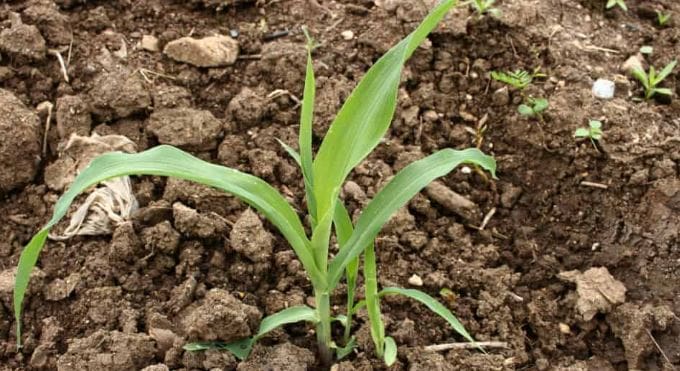RESEARCHERS from the University of Copenhagen in Denmark have discovered an important gene in plants that could help agricultural crops collaborate better with underground fungi–providing them with wider root networks and helping them to absorb phosphorus.
The discovery has the potential to increase agricultural efficiency and benefit the environment.
 It is estimated that about 70 per cent of phosphorus fertiliser used in Danish agriculture accumulates in soil, whereas only 30pc of it reaches plants.
It is estimated that about 70 per cent of phosphorus fertiliser used in Danish agriculture accumulates in soil, whereas only 30pc of it reaches plants.
Quid pro quo–that’s how one might describe the “food community” that the majority of plants have with mycorrhizal fungi.
Plants allow fungi to live among their roots, while feeding them fat and sugar. And in return, fungi use their far-reaching hypha (filamentous branches) to capture vital soil nutrients for plants, including the important mineral phosphorus.
Now, researchers at the University of Copenhagen’s Department of Plant and Environmental Sciences have discovered an extraordinary plant gene, the CLE53 gene, which regulates cooperation between fungi and plants.
The gene is central to a mechanism that controls how receptive plants are to working with mycorrhizal fungi.
Down the road, this newfound knowledge could serve to deliver better harvests and reduced fertiliser use.
“Similar genes are found in all plants–including agricultural crops. So, by mutating or turning off the CLE53 gene in a crop plant, it is more likely for a plant to become symbiotically involved with a fungus. In doing so, it becomes possible to reduce the need for phosphorus fertilisers, as plants improve at absorbing pre-existent phosphorus from soil,” Department of Plant and Environmental Sciences Assistant Professor Thomas Christian de Bang said.
Phosphorus link
Phosphorus is vital for all plants. However, the problem with phosphorus use in agriculture is that more of it is applied for fertilisation than can be absorbed by crops.
It is estimated that about 70pc of phosphorus fertiliser used in Danish agriculture accumulates in soil, whereas only 30pc of it reaches plants.
With rain, there is an ever-present risk that some of the accumulated phosphorus will be discharged into streams, lakes and the sea.
Paradoxically, researchers have observed that when phosphorus levels in soil are high, plants are less likely to collaborate with fungi, meaning that they become worse at absorbing nutrients.
“Through a range of experiments, we have demonstrated that a plant does not produce the CLE53 gene if it lacks phosphorus. However, when the phosphorus levels in a plant are high, or if the plant is already symbiotically involved with a fungus, then the level of CLE53 increases. Our study demonstrates that CLE53 has a negative effect on a plant’s ability to enter into symbiosis with a fungus, and thereby absorb phosphorus most effectively,” Assistant Professor Christian de Bang said.
CRISPR approval
The genomic editing of plants is legal in a number of non-European Union countries such as China, the United States, Switzerland and the United Kingdom.
However, within the EU, there is no general acceptance of gene-editing methods, such as CRISPR, to alter plants and foodstuffs.
Therefore, the researchers’ discovery has, for the time being, a poorer chance of being used in Denmark and the rest of the EU.
“One can use the technology in other parts of the world, and getting started would be relatively straightforward. My guess is that within five years, plants will be tested and refined in such a way that they become more symbiotically involved with fungi and absorb more phosphorus. Here in Denmark and throughout the EU, an acceptance is required for gene editing and an amended approach to approval procedures for these types of plants,” Assistant Professor Christian de Bang said.
Summary:
- 90pc of all plants engage in symbiotic relationships with mycorrhizal fungi, which popularly said, extend the root networks of plants, thus helping them to obtain enough phosphorus, water and other nutrients.
- In order to benefit from the ability of mycorrhizal fungi to extract phosphorus from soil, a plant must feed it with fat and sugar. To avoid spending too much energy on the sponge, if for example, it is experiencing high phosphorus levels or has already been colonised by a fungus, the plant may switch off symbiosis.
- It is estimated that Danish farms fertilise with roughly 30 kilograms of phosphorus per hectare of land.
- Of this, roughly 30pc makes its way to crops, while the remaining 70pc binds to soil.
- With rain, some of this accumulated phosphorus is flushed away via surface runoff, into nearby streams, lakes and the sea. This increases algae growth and can kill both plants and wildlife.
- Phosphorus is a finite natural resource, one that is expected to eventually be depleted.
- Previous research has shown that a similar mechanism exists for symbiosis between legumes and rhizobium bacteria. This involved a CLE gene as well, albeit a different one than the researchers have now discovered.
Source: University of Copenhagen
The research has been published in the Journal of Experimental Botany
The research is funded by the Novo Nordisk Foundation and the University of Copenhagen
https://www.eurekalert.org/pub_releases/2020-06/uoc-ndp061620.php

HAVE YOUR SAY